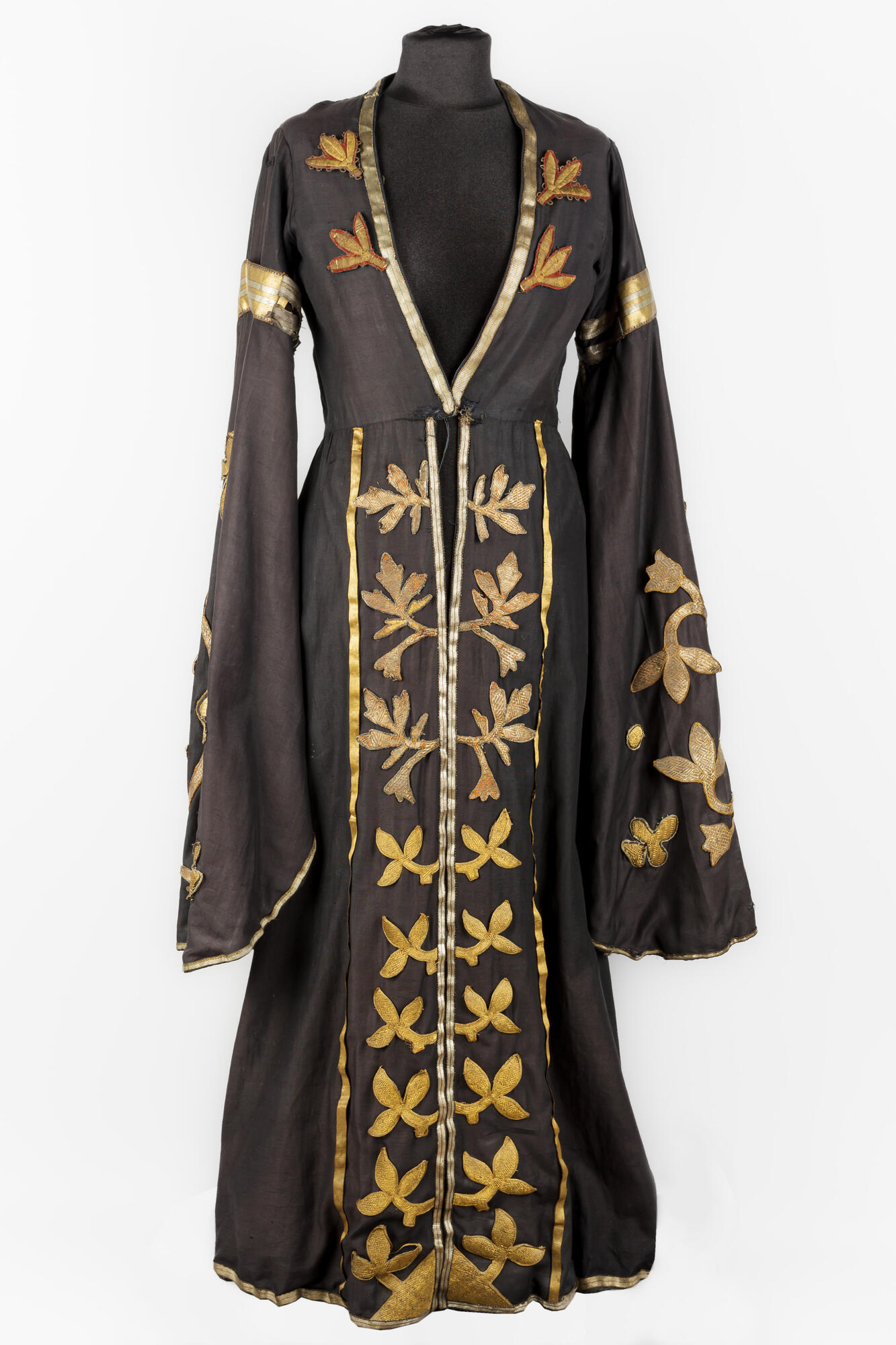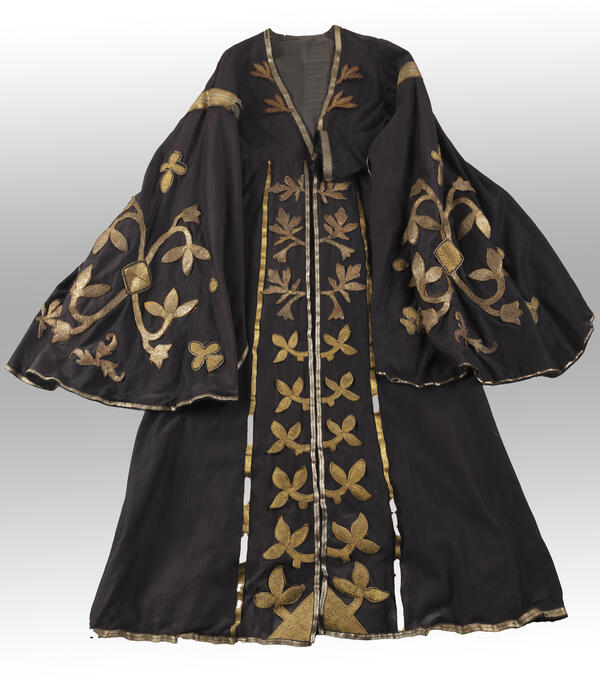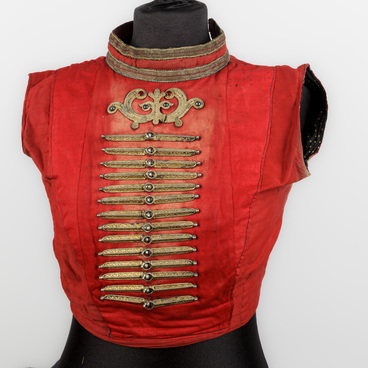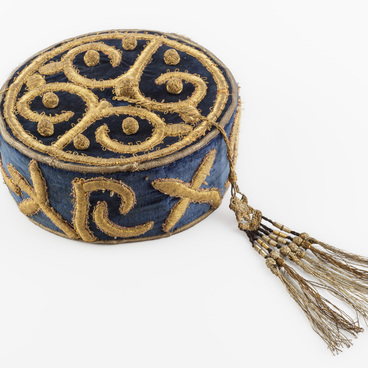The rich history and cultural heritage of the Caucasian peoples are reflected in national costumes. An interesting fact is that, despite the large number of different Circassian tribes, the highlander’s costume is surprisingly homogenous. There are only slight differences in decoration. This is largely due to the similar culture of all Circassian tribes and the natural and geographical living conditions they share.
The Circassian national costume as we know it appeared in the 16th–17th centuries. An interesting fact is that different social status was demonstrated not so much by the clothes design as by the quality of the fabric. The main elements of the women’s costume were a caftan, a dress with a false shirtfront and a belt, a headdress and shoes. The clothes were richly decorated with various patterns embroidered with gold and silver threads.
The traditional women’s dress (sai) was long and reached the floor. It was unbuttoned and made from velvet or thick silk. A sai was richly decorated with gold and silver embroidery and galloons — gold-woven ribbons or braid made of precious metals. There were patterns on the sides, hem and bottom of the sleeves, and all seams were covered with galloons. Usually such dresses were black and dark red. Blue, dark green and purple colors were less common.
The sleeve started just below the shoulder and gradually flared into a rounded piece, which could reach the hem of the dress. By the late 19th century, such decorated sleeves became a separate element of the costume — they were called sleeve pendants. A girl’s hands never remained open above the elbow: they were covered by a caftan or an undershirt. A thin waist was tightly girdled by a silver chased belt, which was often encrusted with precious and semi-precious stones, and could also be supplemented with various pendants.
The museum exhibits a dress dating back to the early 20th century. This festive Circassian outfit is made of black satin and cashmere; it is fastened at the waist with one hook. The outfit is richly decorated with gold embroidery and galloons. The dress features a floral pattern in the form of stems and shamrocks. Such an ornament was traditional and became widespread after Islam became widespread in the Caucasus: Muslim culture prohibits the depiction of animals and people.
Such clothes were very expensive and took years of painstaking work, so only women of the upper classes could afford them. At the end of the 19th century, girls from the most prosperous peasant families also began to wear these dresses to imitate the nobility.
The Circassian national costume as we know it appeared in the 16th–17th centuries. An interesting fact is that different social status was demonstrated not so much by the clothes design as by the quality of the fabric. The main elements of the women’s costume were a caftan, a dress with a false shirtfront and a belt, a headdress and shoes. The clothes were richly decorated with various patterns embroidered with gold and silver threads.
The traditional women’s dress (sai) was long and reached the floor. It was unbuttoned and made from velvet or thick silk. A sai was richly decorated with gold and silver embroidery and galloons — gold-woven ribbons or braid made of precious metals. There were patterns on the sides, hem and bottom of the sleeves, and all seams were covered with galloons. Usually such dresses were black and dark red. Blue, dark green and purple colors were less common.
The sleeve started just below the shoulder and gradually flared into a rounded piece, which could reach the hem of the dress. By the late 19th century, such decorated sleeves became a separate element of the costume — they were called sleeve pendants. A girl’s hands never remained open above the elbow: they were covered by a caftan or an undershirt. A thin waist was tightly girdled by a silver chased belt, which was often encrusted with precious and semi-precious stones, and could also be supplemented with various pendants.
The museum exhibits a dress dating back to the early 20th century. This festive Circassian outfit is made of black satin and cashmere; it is fastened at the waist with one hook. The outfit is richly decorated with gold embroidery and galloons. The dress features a floral pattern in the form of stems and shamrocks. Such an ornament was traditional and became widespread after Islam became widespread in the Caucasus: Muslim culture prohibits the depiction of animals and people.
Such clothes were very expensive and took years of painstaking work, so only women of the upper classes could afford them. At the end of the 19th century, girls from the most prosperous peasant families also began to wear these dresses to imitate the nobility.



